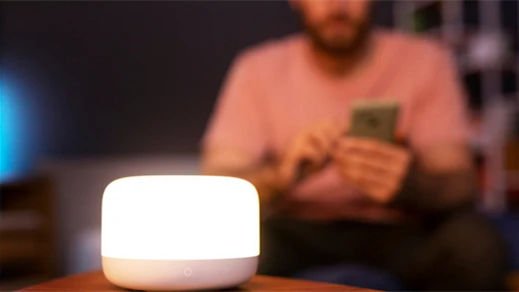2In the realm of modern illumination, intelligent lighting controls have emerged as a sophisticated solution to enhance convenience, efficiency, and security in various settings. This article delves into the advantages and disadvantages of intelligent lighting controls, juxtaposed with three key products: remote control lights, motion sensor lights, and Dusk to dawn lights
Introduction of Intelligent Lighting Controls
Intelligent lighting controls encompass a range of technologies that enable automated and personalized management of lighting systems. These controls typically integrate sensors, timers, and remote access capabilities to optimize lighting usage. One of the foremost benefits of intelligent lighting controls is their ability to optimize energy consumption. By automatically adjusting lighting levels based on occupancy, ambient light, and user preferences, these systems minimize wasted energy and contribute to lower utility bills.
Next, we will introduce intelligent control light and its advantages and disadvantages from remote control, motion sensor light and dusk to dawn light.

Remote Control Lights
Remote control lights allow users to adjust lighting settings from a distance using a handheld remote or smartphone app.

Pros
- Convenience: Remote control lights offer unparalleled convenience, allowing users to adjust lighting settings without physically interacting with switches or fixtures. This is particularly useful for individuals with mobility limitations or in scenarios where accessing switches is impractical.
- Flexibility: With remote access, users can control lights from anywhere with an internet connection. Whether they're at home, at work, or on vacation, users have complete control over their lighting environment.
- Integration: Many remote control lighting systems integrate seamlessly with smart home platforms, enabling integration with other devices and automation routines.
Cons
- Dependency on Technology: Remote control lights rely heavily on technology, making them susceptible to connectivity issues or software glitches. In the event of a malfunction, users may temporarily lose control over their lighting.
- Compatibility Concerns: Compatibility issues may arise when integrating remote control lights with existing lighting infrastructure or smart home ecosystems. Ensuring compatibility across devices and platforms may require additional research or investment.
- Battery Dependence: Some remote control lights require batteries to power the remote or communication devices, which adds ongoing maintenance and replacement costs.
Motion Sensor Lights
Motion sensor lights activate in response to movement detected within their vicinity, offering hands-free illumination.

Pros
- Energy Efficiency: Motion sensor lights conserve energy by only activating when motion is detected, eliminating the need for lights to remain illuminated in unoccupied spaces.
- Hands-Free Operation: The hands-free operation of motion sensor lights enhances convenience, especially in areas where manual control is impractical or inconvenient.
- Security: Motion sensor lights serve as an effective deterrent against intruders by illuminating dark areas when motion is detected, alerting occupants to potential threats.
Cons
- False Triggers: Motion sensor lights may be triggered by non-threatening movements such as passing wildlife or moving foliage, leading to nuisance activations and unnecessary energy consumption.
- Limited Range and Sensitivity: The range and sensitivity of motion sensors may vary, leading to limitations in coverage or responsiveness in certain environments.
- Installation Challenges: Proper placement and calibration of motion sensor lights are crucial for optimal performance, requiring careful consideration of factors such as height, angle, and ambient conditions.
Dusk to dawn Lights
Dusk to dawn lights are designed to automatically activate at dusk and deactivate at dawn, providing continuous illumination throughout the night.

Pros
- Continuous Illumination: Dusk to dawn lights ensure consistent illumination during nighttime hours without requiring manual intervention, enhancing safety and visibility.
- Hands-Free Operation: Similar to motion sensor lights, Dusk to dawn lights offer hands-free operation, alleviating the need for manual control or scheduling.
- Versatility: Dusk to dawn lights are well-suited for a variety of outdoor applications, including residential driveways, pathways, and commercial premises.
Cons
- Energy Consumption: While providing continuous illumination, Dusk to dawn lights consume energy throughout the night, which may result in higher electricity bills compared to motion sensor or timed lighting solutions.
- Light Pollution: Continuous illumination from Dusk to dawn lights can contribute to light pollution, affecting visibility of stars and disrupting nocturnal wildlife behaviors.
- Limited Customization: Dusk to dawn lights offer limited customization options compared to intelligent lighting controls, as they operate solely based on ambient light levels without considering occupancy or user preferences.
Conclusion
In conclusion, while intelligent lighting controls offer numerous benefits such as energy efficiency, customization, and enhanced security, they also present challenges such as initial cost, complexity, and reliability concerns. Remote control lights, motion sensor lights, and Dusk to dawn lights each offer unique advantages and drawbacks, catering to different preferences and requirements. Ultimately, the choice of lighting control method depends on factors such as budget, convenience, and desired functionality.


































Leave a comment
This site is protected by hCaptcha and the hCaptcha Privacy Policy and Terms of Service apply.